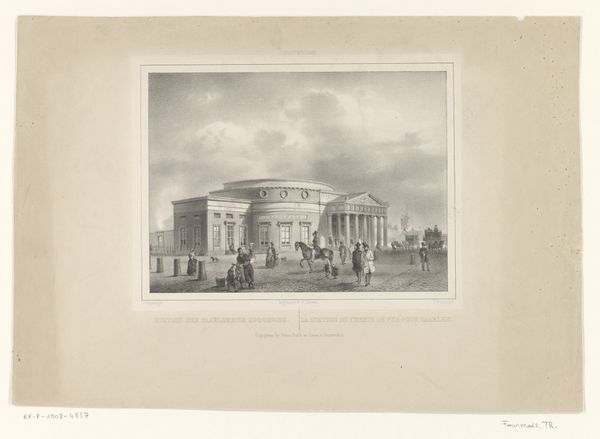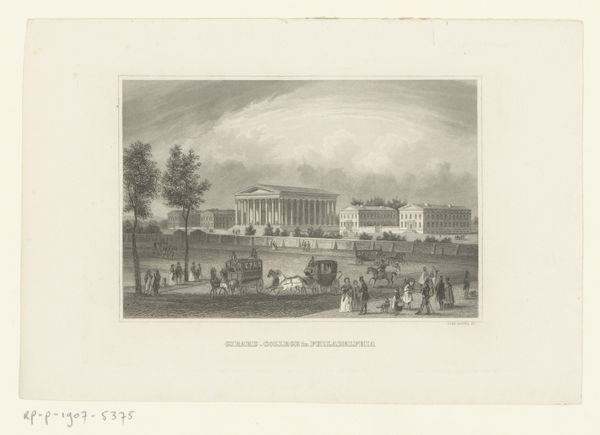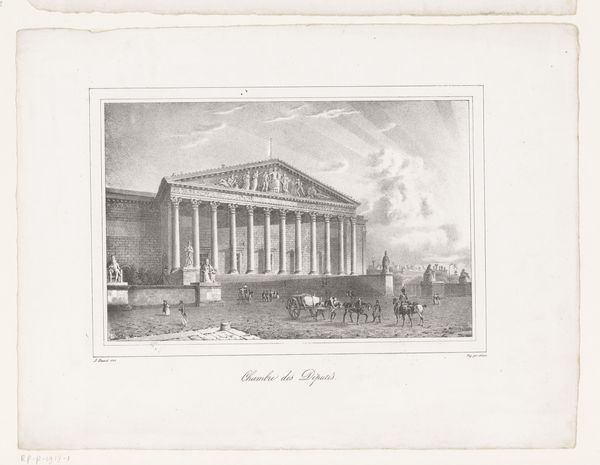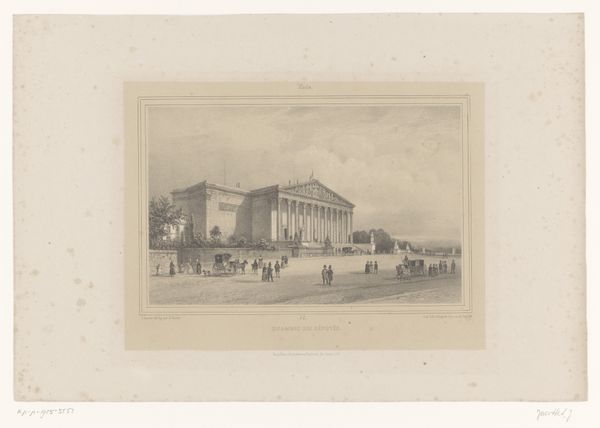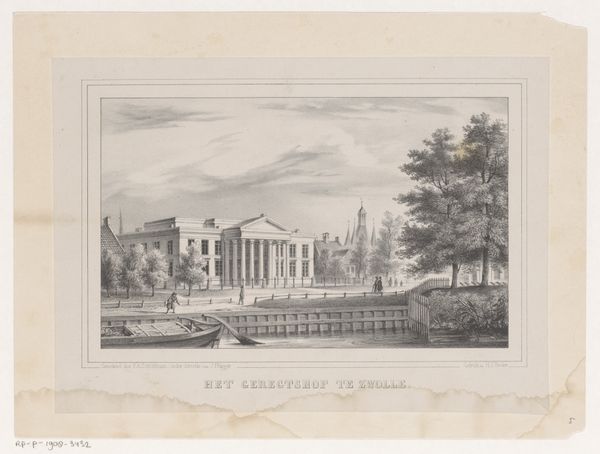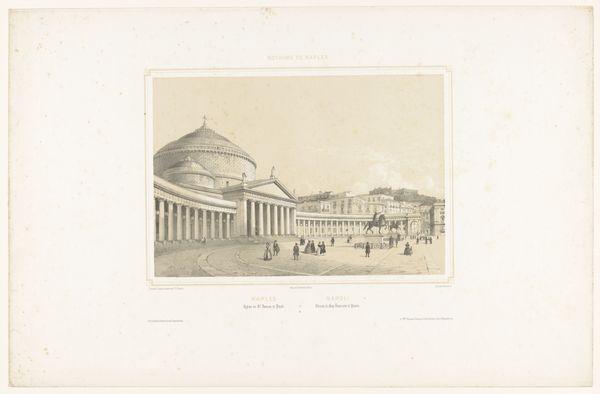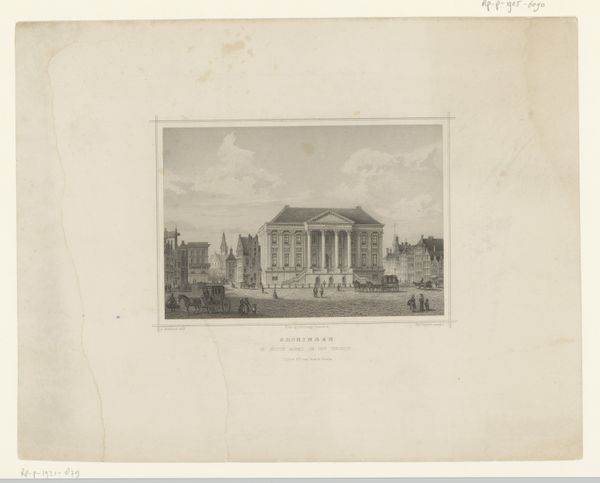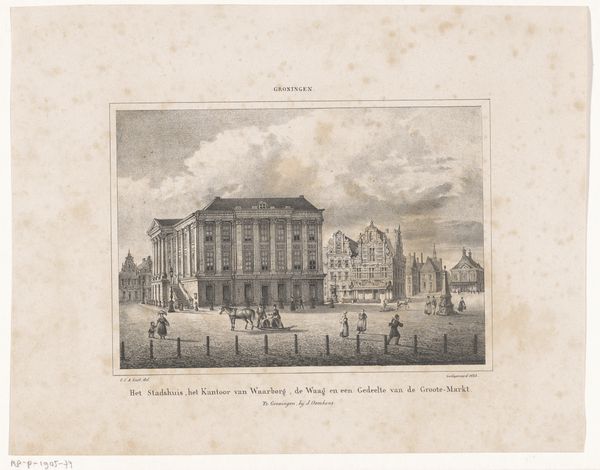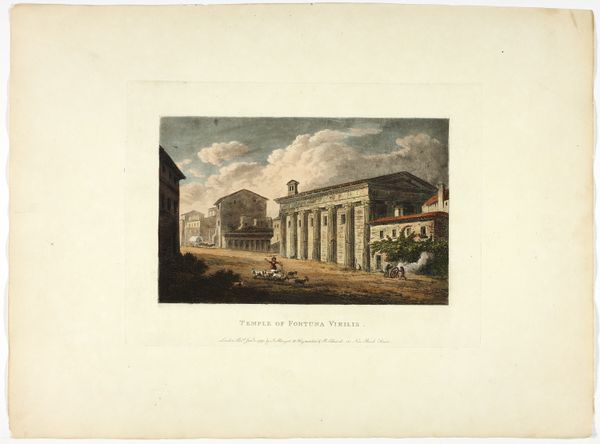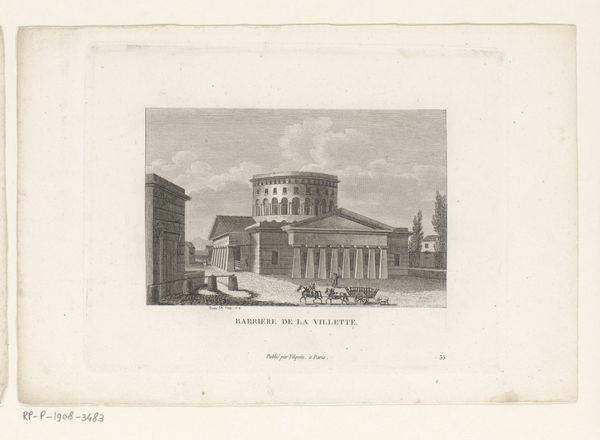
print, engraving, architecture
#
neoclacissism
# print
#
old engraving style
#
cityscape
#
street
#
engraving
#
architecture
Dimensions: height 167 mm, width 251 mm
Copyright: Rijks Museum: Open Domain
This is Johann Gabriel Friedrich Poppel's print of the 'Hall of Justice' in New York. The building, known as 'The Tombs' because of its heavy Egyptian style, was a jail, built to replace an earlier prison. The cultural reference to ancient Egypt speaks volumes. Egypt was the land of pharaohs, pyramids, and – crucially – tombs. This architectural allusion tells us something about 19th-century attitudes to punishment. 'The Tombs' seems designed to inspire awe and fear, its imposing facade expressing the power of the state. New York was experiencing rapid population growth at this time. It's possible the prison's design was intended to deter potential offenders, as well as being a functional space for incarceration. To understand the imagery better, we might consult period newspapers, architectural plans, and penal reform pamphlets. The meaning of art is always rooted in a specific time and place.
Comments
No comments
Be the first to comment and join the conversation on the ultimate creative platform.
